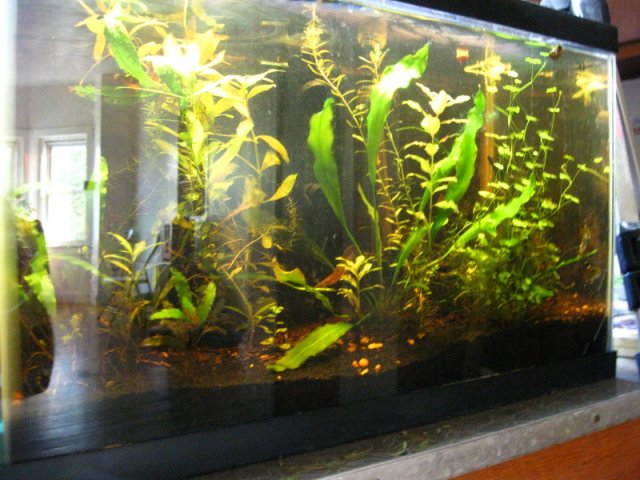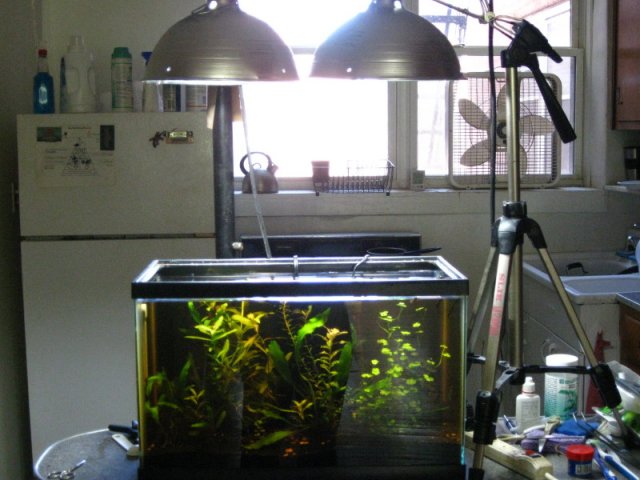Not having measuring devices for Oxygen and CO2, I can't test for levels but only go from observation when this or that is changed. Water surface disturbance increases the exchange of gasses, primarily O and CO2. The levels of each in the water and the air determine which way they exchange, from denser to lighter. Normally, without any addition of CO2, the exchange brings in more oxygen (to the water) and drives out CO2. CO2 builds during the night in planted tanks, from respiration of fish, plants and bacteria but more importantly from the breakdown of organics which is the largest source of CO2. In your soil substrate, this is even greater, at least for the first few months. And as the plants are not taking in all this CO2 during darkness, this is when it impacts fish.Thanks for the info, as usual, Byron. It seems a little difficult to discern what the aeration is doing with the CO2 - whether it is increasing the amount of CO2 or decreasing it (fish respiring at the surface, surface agitation fixing that) to me, anyway and I'm sorry for not being clearer - I meant that I could aerate the new water in the bucket to be used for the water change the next day (a common suggestion) overnight if I want to, avoiding some of the CO2 peaks from undegassed tap water. Btw, I have adopted the practice of stirring the tap water until it becomes clear. I assume that this does something to de-CO2 the tap water.
I think that aerating the tank forces the water to dissolve more atmosphere (with a corresponding higher dissolved atmospheric pressure) including CO2. Or maybe I'm looking at this the wrong way, and it attempts to de-gas tank water and you get less dissolved atmospheric gases. Uh! Lucky if I get out of this with all my feathers intact. Sounds like it depends on what the dissolved atmospheric pressure is vs. the equilibrium dissolved atmospheric pressure. If there are more atmospheric gases dissolved, aeration would, it seems to me, try to release excess gases. Conversely, if there are less dissolved gases than the equilibrium point, aeration would help bring more atmosphere into solution. It seems to me that any water movement would release gases, including CO2, at night when more of the dissolved bacteria-generated CO2 is building up, and that the dissolved gas level is always trying to get back to equilibrium with the atmosphere.
And, to wrap things up, it seems to me that in the typical situation of fish gasping at the surface, the fish might be having trouble breathing because of too much CO2. I'm not sure. Probably not in a low-tech tank. Low water circulation not bringing enough O2 into the tank?
Steven
Plants require only a small dissolved oxygen level. Too much oxygen entering the water is actually detrimental to plants (not directly to fish) because some minerals readily bind with oxygen and become too large to be taken up by plants; iron is one, there are others. So a nutrient deficiency for plants can occur. During darkness, oxygen may decrease sufficiently to be detrimental to fish, as I believe in some of my tanks, which is why my increasing the surface movement just a bit has resulted in a noticeable change in fish response during the early morning.
With respect to the CO2 in the tap water, I would not fuss over that; it will get used up within a few hours, and I have never noticed any detrimental effect on the plants from this. Quite the opposite in fact.
Byron.







